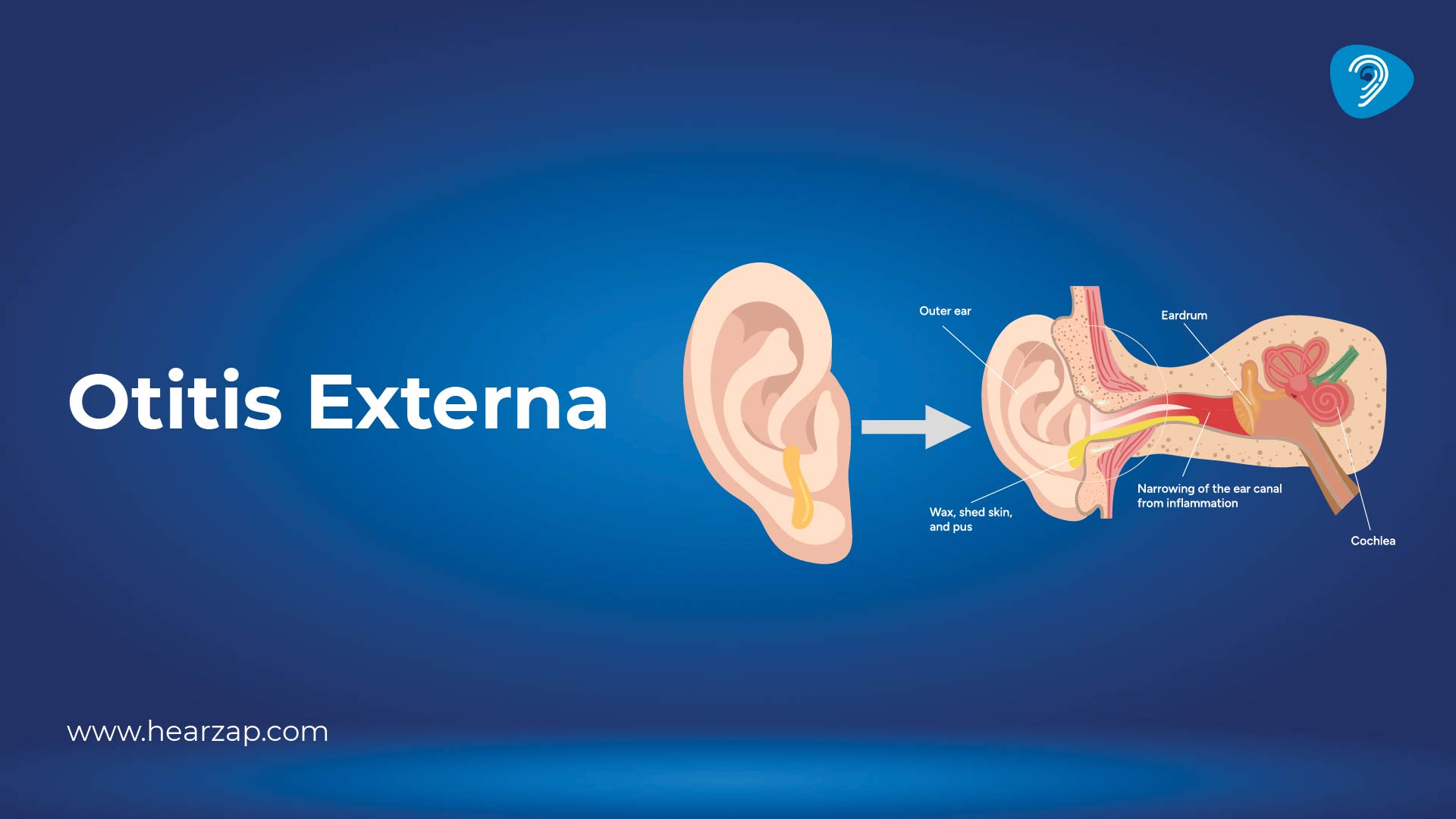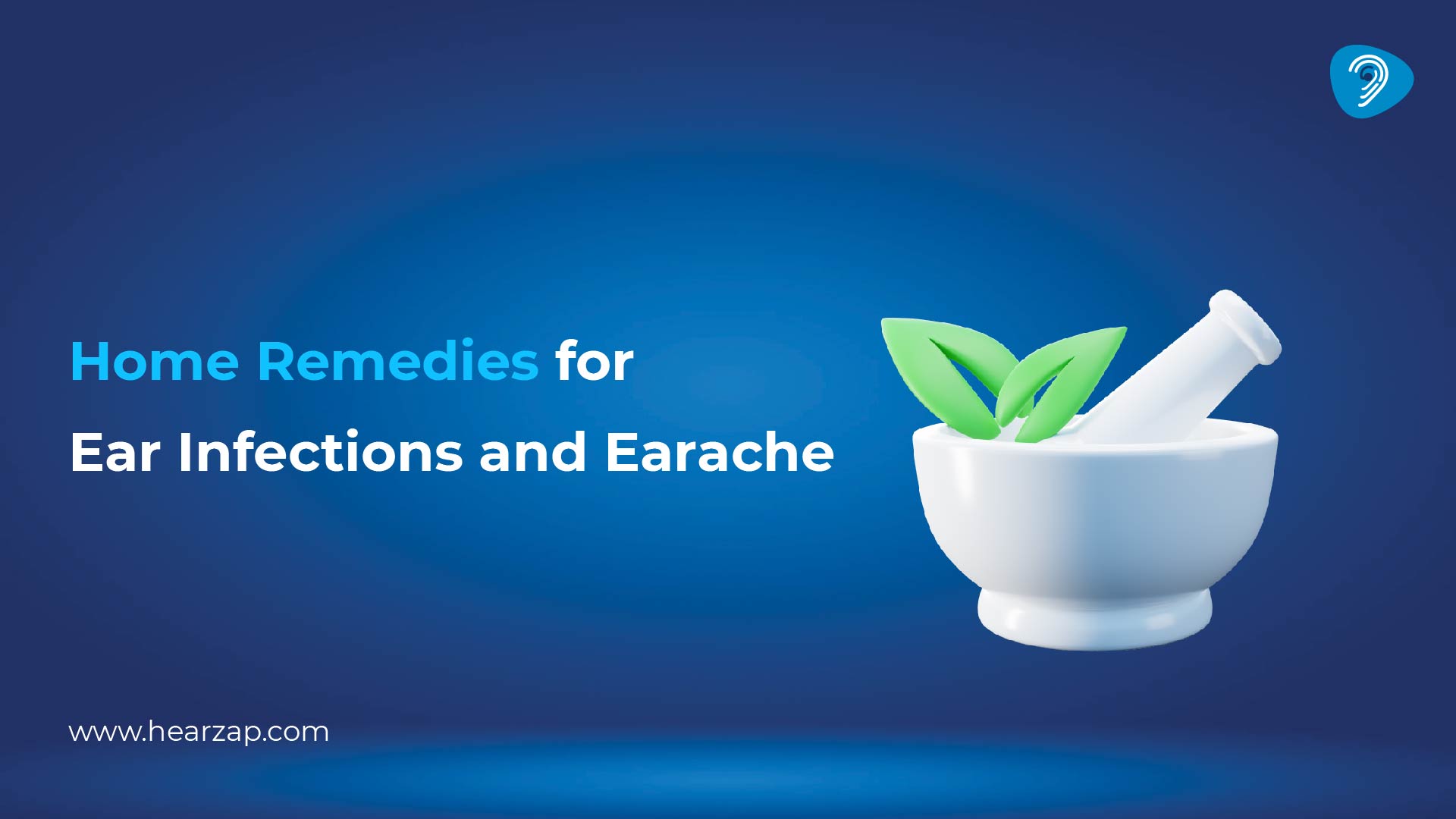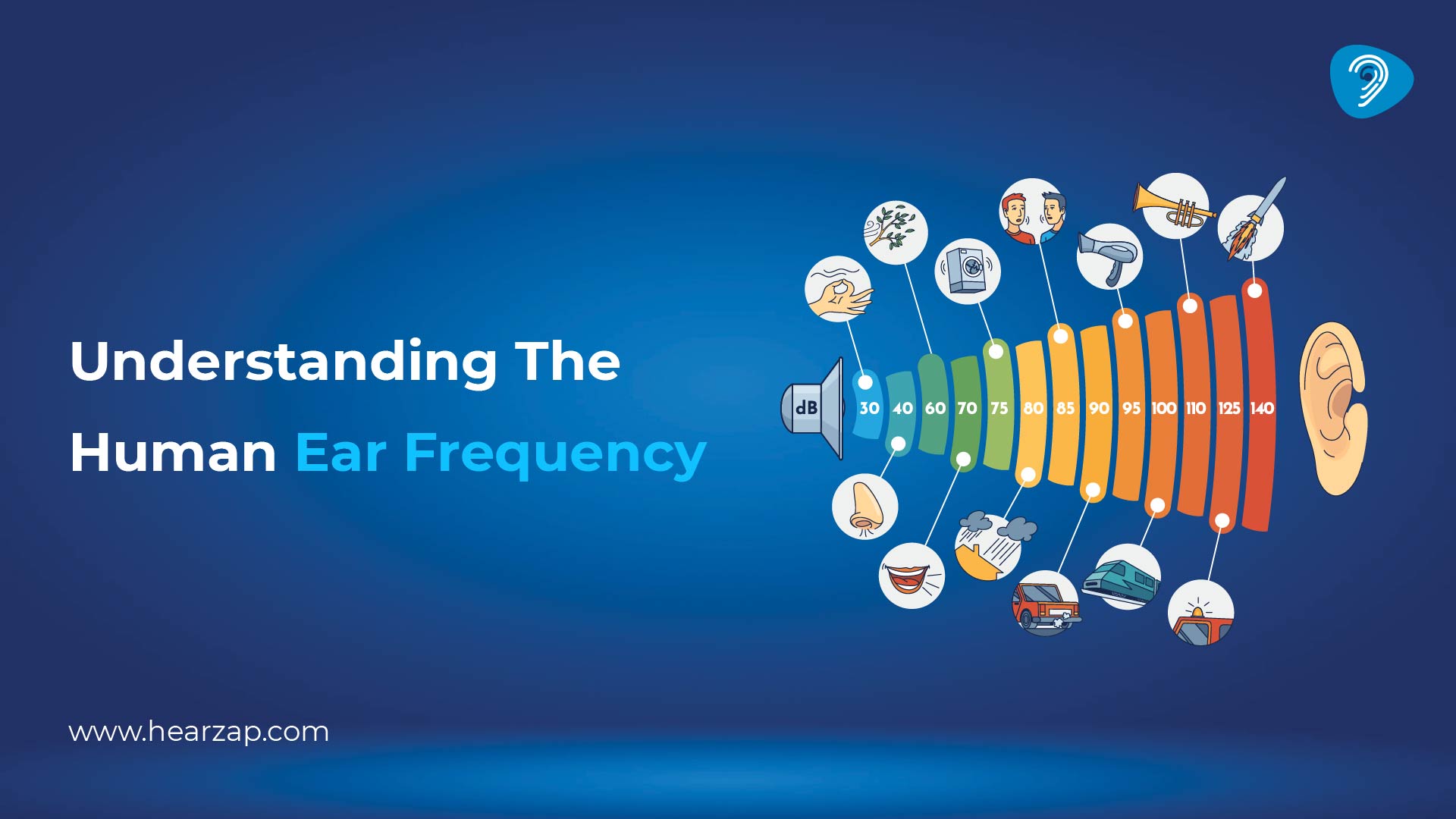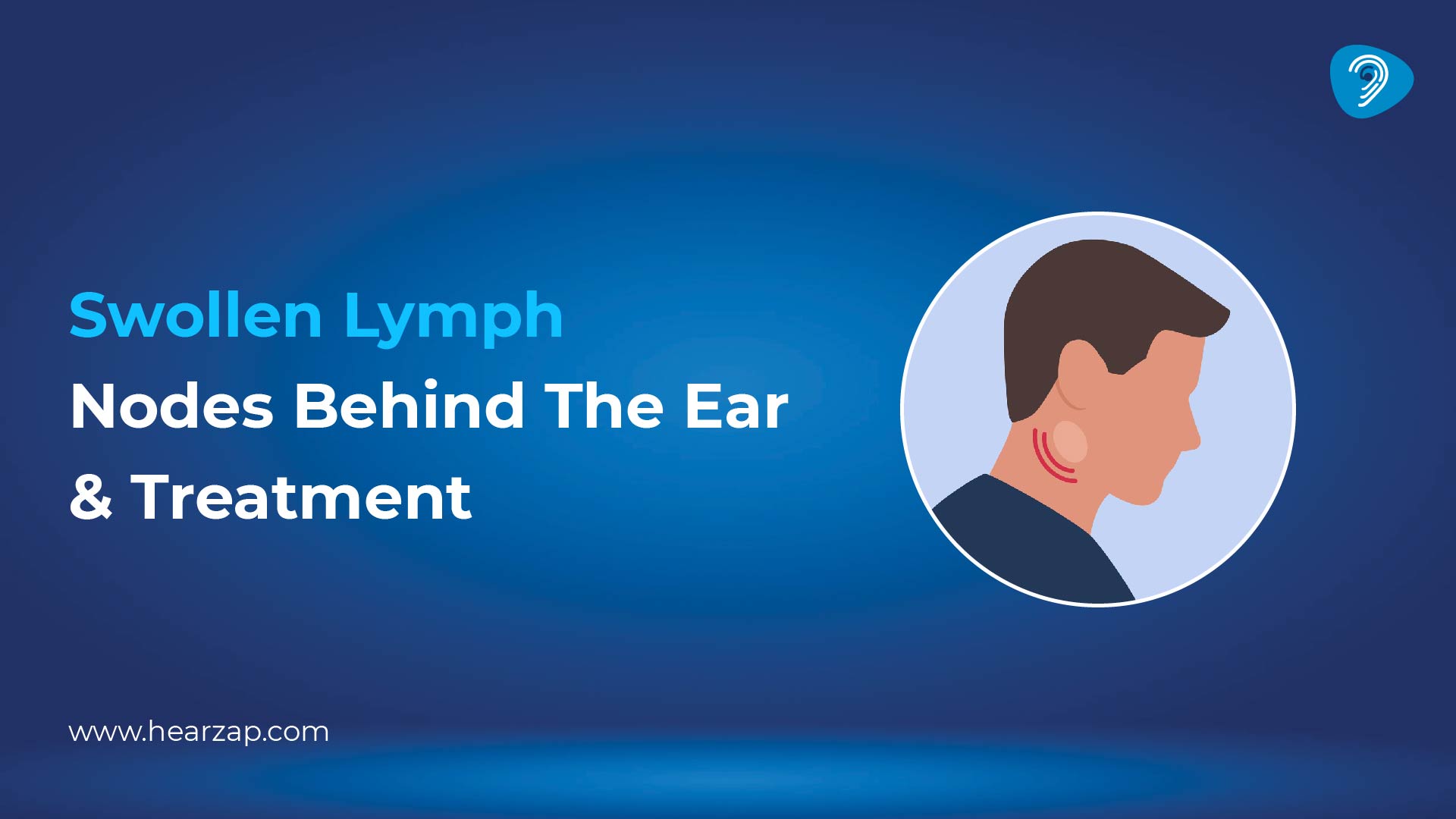Generic
Types of Ear Infections You Should Know About
By Team Hearzap | Oct. 8, 2025
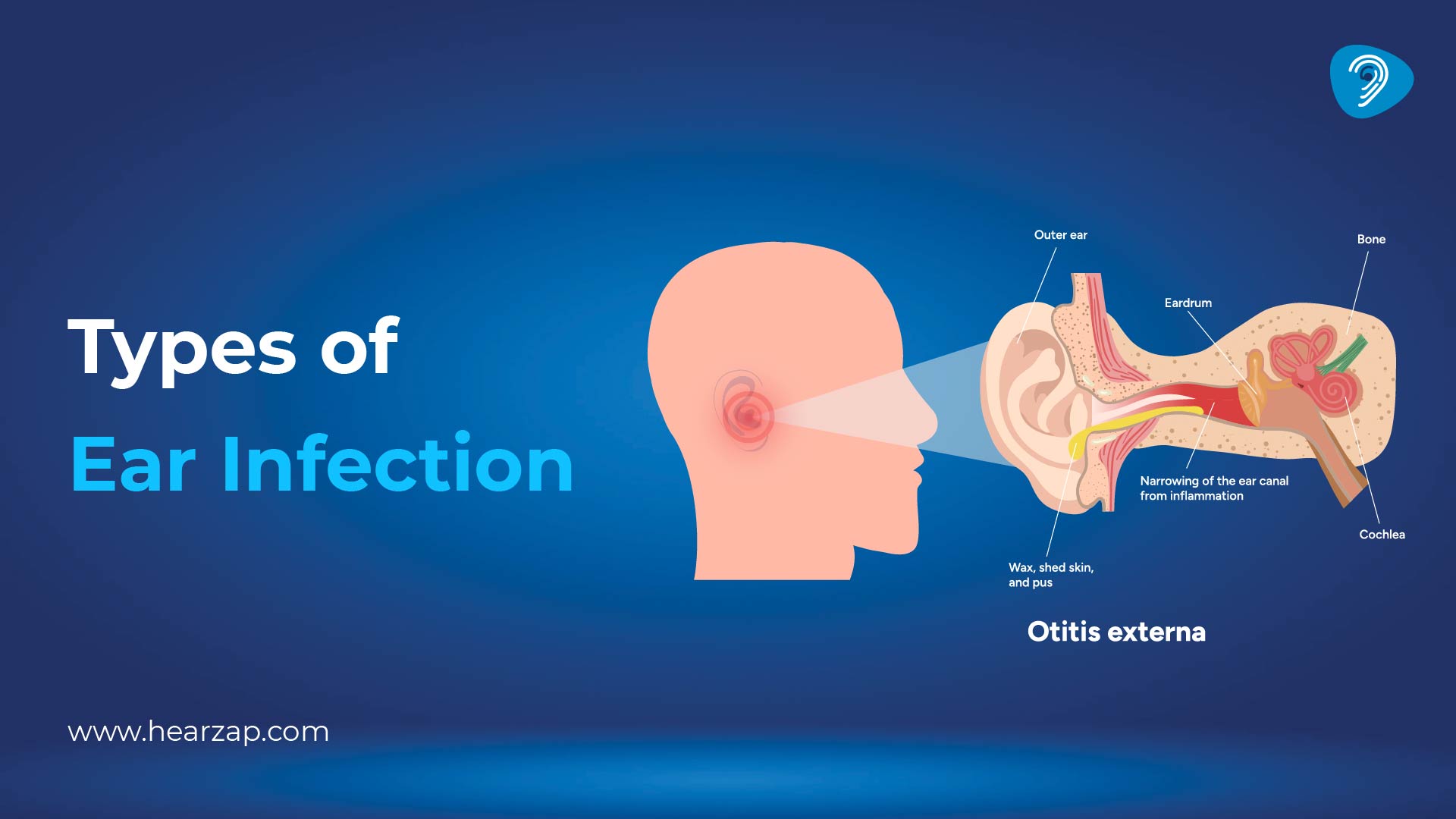
Ear problems can make daily life unexpectedly hard - voices sound muffled, conversations take effort, and the dull ache can throw off focus at work or school. This guide breaks down the types of ear infections that doctors commonly see in India, what an infection in ear really means, the usual ear infection causes, the core ear infection signs, and practical steps on how to treat ear infection safely. You’ll also find quick pointers on when to book a hearing test and what to note if symptoms refuse to settle.
What is an Ear Infection?
An ear infection is inflammation in the ear, often caused by germs or trapped moisture. It can affect the outer, middle, or inner ear and usually leads to pain, swelling, or fluid build-up.
Common Causes of Ear Infections
Understanding the usual ear infection causes helps you prevent repeat episodes.
- Recent cold, flu, or sinus infection that moves up the Eustachian tube into the middle ear
- Allergies leading to nasal congestion and poor middle-ear ventilation
- Water remaining in the ear after swimming or bathing (“swimmer’s ear”), a common trigger for ear canal infection
- Ear cleaning with objects (cotton buds, hairpins) that scratch the canal skin
- Pollution, smoke exposure, and abrupt pressure changes (flights, hill travel)
- Poorly controlled diabetes or skin conditions that affect the canal lining
- Less commonly, fungal overgrowth in hot, humid weather
General Symptoms of Ear Infections
While each type has its own pattern, there are shared symptoms of ear infection:
- Ear pain or a sense of pressure
- Fullness or popping sensation
- Temporary hearing loss
- Ringing (tinnitus) or dizziness in inner-ear problems
- Fever and tiredness during active infection
- Fluid discharge if the eardrum leaks
These are typical ear infection signs, but they can overlap with wax build-up or jaw joint issues, another reason a quick check with an ENT can be helpful.
Symptoms of Ear Infection in Adults
The symptoms include:
- Localised ear pain that worsens on chewing or when pressing the outer ear
- Reduced clarity of sound - voices feel “far away” (temporary hearing loss)
- Headache or heaviness around cheekbones if the nose is blocked
- Itchiness and tenderness at the ear opening, especially in ear canal infection
- Light-headedness in inner-ear involvement
These are common symptoms of ear infection in adults, but the intensity varies. If symptoms persist beyond 48-72 hours or keep recurring, book a hearing test and see an ENT for hassle-free ear infection treatment.
Middle Ear Infection Symptoms
Middle ear infection symptoms centre around the space behind the eardrum:
- Throbbing or deep-seated earache
- Trouble hearing TV at the usual volume (temporary hearing loss)
- A feeling of fluid moving or crackling on swallowing
- Fever during acute episodes
- In children: irritability, poor sleep, tugging at the ear
1. Middle Ear Infections (Otitis Media)
This is the common type of ear infection most people think of. It affects the air-filled middle-ear cavity and the Eustachian tube, which balances pressure between the nose and ear. Middle-ear infections range from short, painful attacks to longer periods of glue-like fluid persisting after the pain fades.
How it happens:
- A cold or allergy blocks the tube, trapping fluid.
- Germs multiply in that fluid.
- Pressure rises, causing pain; sometimes the eardrum may leak, releasing discharge.
Key points about this middle ear infection type:
- Often follows nose and throat infections.
- Pain can be sharp, then ease if the eardrum leaks.
- Hearing typically returns as fluid clears, but lingering fluid can blur sound for weeks.
When to watch closely:
- Repeated episodes (more than three in 6 months)
- High fever or severe pain
- Balance problems or persistent hearing loss
2. Outer Ear Infections (Ear Canal Infection)
An ear canal infection (otitis externa) involves the skin-lined canal leading to the eardrum. Warm weather, frequent swimming, and habitual ear cleaning raise the risk.
Typical features:
- Itchy, tender canal - hurts when pulling the ear or pressing the tragus of the ear
- Swollen skin and a narrowed canal; sound seems muffled
- Watery or thick discharge
- Often triggered by trapped moisture (“swimmer’s ear”) or minor scratches
Prevention pointers for the Indian climate:
- Dry ears gently after a shower or swim; tilt the head to let water drain
- Avoid cotton buds - use a soft cloth outside the ear only
- Consider a doctor-approved drying drop in high-humidity seasons
3. Inner Ear Infections (Labyrinthitis)
The inner ear controls both hearing and balance. When it’s inflamed (commonly after a viral illness), the world can spin.
What people notice:
- Sudden vertigo (a spinning sensation), nausea, and imbalance
- Muffled hearing or ringing
- Sensitivity to head movement; lying still often helps
Because the inner ear also houses the hearing organ, any sudden change in hearing deserves urgent care. Even if symptoms settle, a follow-up hearing test helps track recovery.
4. Bacterial Ear Infections
A bacterial ear infection can affect the outer, middle, or, less commonly, the inner ear. In the middle ear specifically, a bacterial infection in ear is more likely after a cold blocks the tube and fluid sits behind the eardrum.
Clues that suggest bacteria might be involved:
- A higher fever
- Pus-like discharge
- Marked redness and swelling in the canal or eardrum
- Pain that doesn’t ease within a day or two
Only a clinician can confirm the need for antibiotics. Self-starting leftover medicines is not wise; dosage, duration, and drug choice depend on the site and severity.
How Many Types of Ear Infections Are There?
There are three parts of the ear- the outer ear, the middle ear, and the inner ear. Infections can happen in any of these and may be caused by bacteria, viruses, or even fungi. They can show up suddenly and clear quickly, or sometimes linger and come back.
- Middle ear infection
- Ear canal infection
- Inner-ear inflammation (labyrinthitis)
- Bacterial ear infection is a cause category that can affect any compartment.
These cover the main types of ear infections in adults and children.
Quick Pattern Recap (Everyday Clues)
- Deep, throbbing ache after a cold, plus muffled sound: think middle ear infection.
- Pain on pulling the outer ear, itch, and watery discharge, especially in humid weather, point to an ear canal infection.
- Sudden spinning, nausea, and imbalance, sometimes with ringing, suggest inner-ear inflammation (labyrinthitis).
- High fever and pus-like discharge: a bacterial ear infection is more likely; medical review is sensible.
Simple prevention that fits Indian routines:
- Dry ears after a shower or swim; avoid inserting objects.
- Manage seasonal allergies and nasal congestion early.
- Keep personal earphones clean; limit very loud volumes that irritate sensitive canals.
- During monsoon travel or flights, sip water, chew gum, and swallow to equalise pressure.
How to Treat Ear Infections
“How to treat ear infection?” The answer depends on which part of the ear is involved, what caused it, and whether there are risk factors like diabetes or a perforated eardrum. Many mild cases resolve with rest and care; others need prescription drops or tablets. If you notice any sudden hearing loss, severe pain, swelling around the ear, or high fever, seek medical attention promptly for an examination.
Home Remedies and Self-Care
Home care can support comfort while you arrange a visit:
- Warm compress: a warm (not hot) cloth over the ear can ease pressure
- Adequate fluids and rest to help recovery
- Gentle decongestant measures for a blocked nose (as advised by a clinician)
- For ear canal infection, keep the ear dry; do not insert cotton buds
- Avoid smoking and indoor pollution - these irritate the Eustachian tube
- Over-the-counter pain relief, where suitable for you, can reduce discomfort
Avoid:
- Pouring oil or homemade drops into the ear unless a doctor confirms the eardrum is intact
- Digging out wax; it protects the canal, and over-cleaning increases risk
- Sharing earphones; clean personal ear devices regularly
These steps are supportive; they are not a substitute for professional care if symptoms are significant.
Medical Treatments
Medical care is tailored to the type:
- Ear canal infection: Cleansing of the canal by a clinician and prescription antibiotic or antifungal drops; wick placement if swelling is severe
- Middle ear infection: Pain control is done first; antibiotics if bacterial signs are strong, in vulnerable groups, or if symptoms persist; short-term nasal sprays may be advised for tube function
- Inner-ear inflammation: Medications are given to control vertigo and nausea; some cases need further tests and close monitoring of hearing
- Bacterial ear infection: Targeted therapy is done based on site and severity; follow the exact dose and duration
People often ask, “how to cure ear infection completely?” Recovery means calming the inflammation, clearing germs if present, and restoring ventilation and hearing. Completing the advised course and attending follow-ups, especially a hearing test after middle-ear trouble, helps reduce relapse.
When to See a Doctor
See an ENT or your family doctor if you notice:
- Severe ear pain, high fever, or swelling around the ear
- Ear discharge, especially if foul-smelling or blood-stained
- Sudden or one-sided hearing loss
- Vertigo with vomiting or a new imbalance
- Symptoms persisting beyond 48–72 hours despite home care
- Recurrent episodes (for example, every time you get a cold)
Children, older adults, and people with diabetes or immune conditions should seek timely care, as complications can be more likely.
Conclusion
Ear issues are common, but understanding the types of ear infections makes decisions easier. Recognise the main patterns ear canal infection, middle ear infection, inner-ear inflammation, and bacterial ear infection and match them with the key ear infection signs you’ve felt. Use home measures for comfort, keep the ear dry, and seek timely evaluation for persistent symptoms. If you notice ongoing muffled sound or sudden changes, book a hearing test through Hearzap to document your hearing levels and guide next steps with your ENT specialist. If in doubt at any point, consult an ENT specialist for personalised advice. Hearzap makes it easy to connect with certified audiologists and book appointments online, helping you stay informed, protect your ears, and hear life clearly.
FAQs
Are ear infections contagious?
The infection inside your ear isn’t “caught” by touching ears, but the viral cold that precedes a middle-ear episode can spread through droplets. Good hand hygiene and cough etiquette reduce risk.
Do I always need antibiotics?
Not necessarily. Many mild middle-ear infections are viral or settle with pain relief and observation. A bacterial ear infection or severe ear canal infection may need antibiotic drops or tablets; your clinician decides after examining the ear.
Can air travel worsen an ear infection?
Yes, pressure changes during take-off and landing can increase pain if the Eustachian tube is blocked. If you must fly, use gentle pressure-equalising techniques (swallowing, yawning) and follow medical advice.
Will an ear infection affect long-term hearing?
Most people recover fully. Persistent fluid after a middle ear infection can blur sound temporarily. A follow-up hearing test can check recovery and guide further care if sounds remain muffled.
Is there a link between ear infections and allergies?
Allergies can block the nose and tube, raising the chance of middle-ear fluid and infections. Managing allergies often reduces recurrence.
How do I differentiate wax from infection?
Wax usually causes fullness without fever or sharp pain. Infection often adds pain, fever, discharge, or vertigo. An ENT exam is the simplest way to be sure.
What lifestyle changes lower my risk?
Keep ears dry after swimming, avoid inserting objects, manage allergies, reduce smoke exposure, and seek timely care for colds and sinus issues.
Contact us
We are here for all your hearing needs, from hearing tests to hearing aids. Fill out the form below, and we will give you a call soon.
Please enter a valid mobile number with 10 digits.
Recent Blogs
By None | Nov. 27, 2025
By None | Nov. 26, 2025
By None | Nov. 24, 2025
By None | Nov. 20, 2025
By None | Nov. 18, 2025
